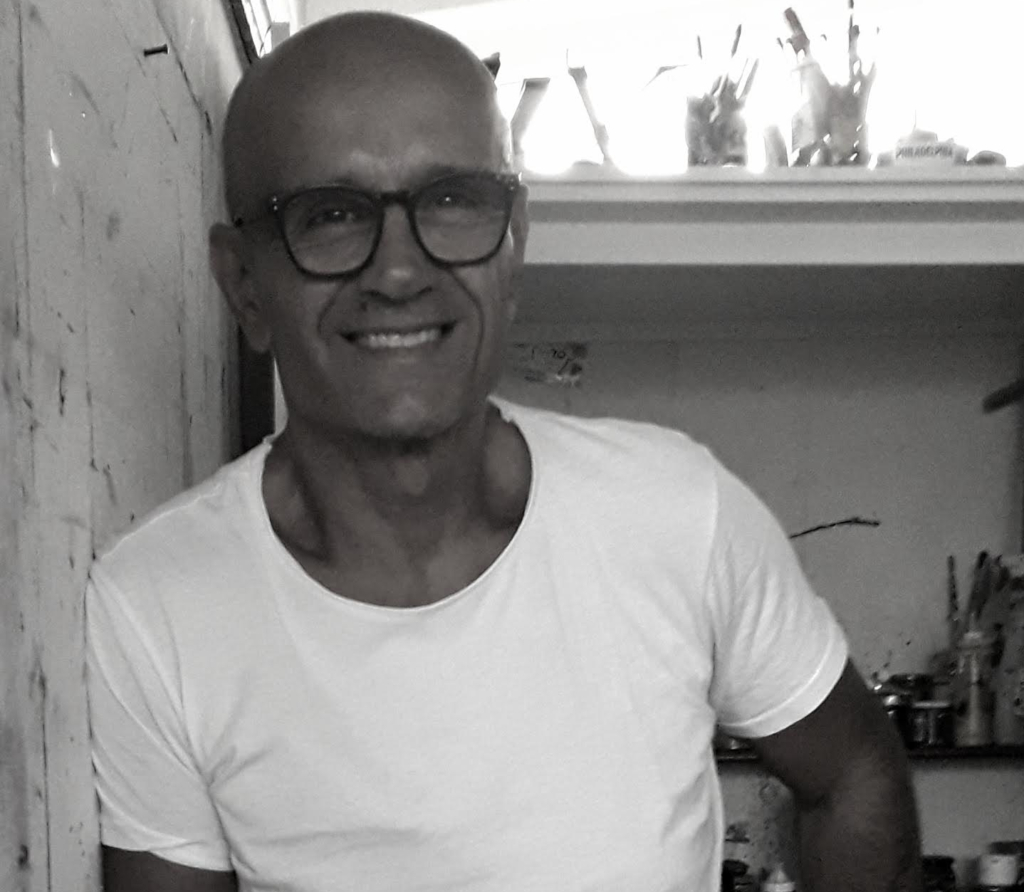
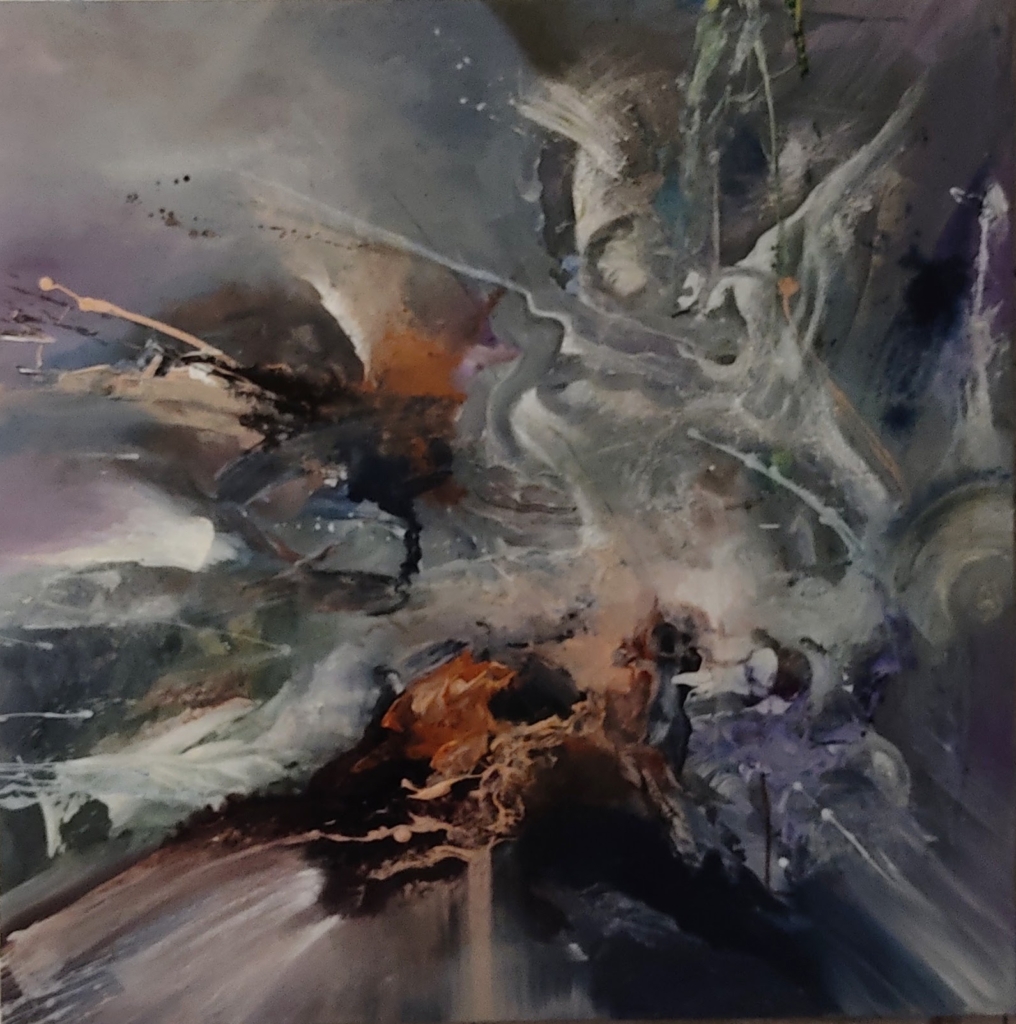
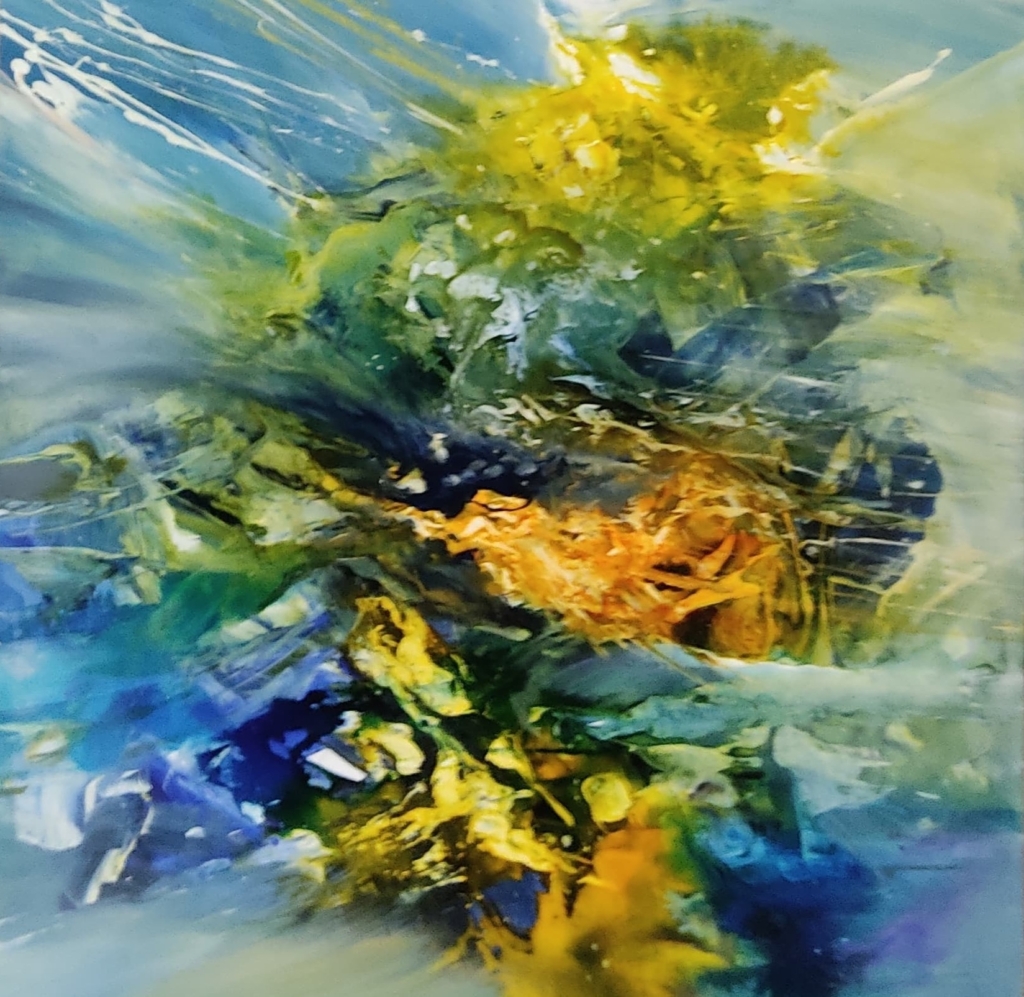

In alcune opere, soprattutto nelle ultime, si intravede un ritorno alla figurazione, il suo stile sta cambiando oppure è solo una parentesi legata strettamente a quelle opere specifiche? Quanto è importante la spinta evolutiva di un artista?
Il figurativo lo accolgo e lo abbandono a secondo dei periodi e degli stati d’animo. Attraverso le figure prendono vita mia moglie e le mie figlie, dunque in quel caso è influenzato dai loro stati d’animo.
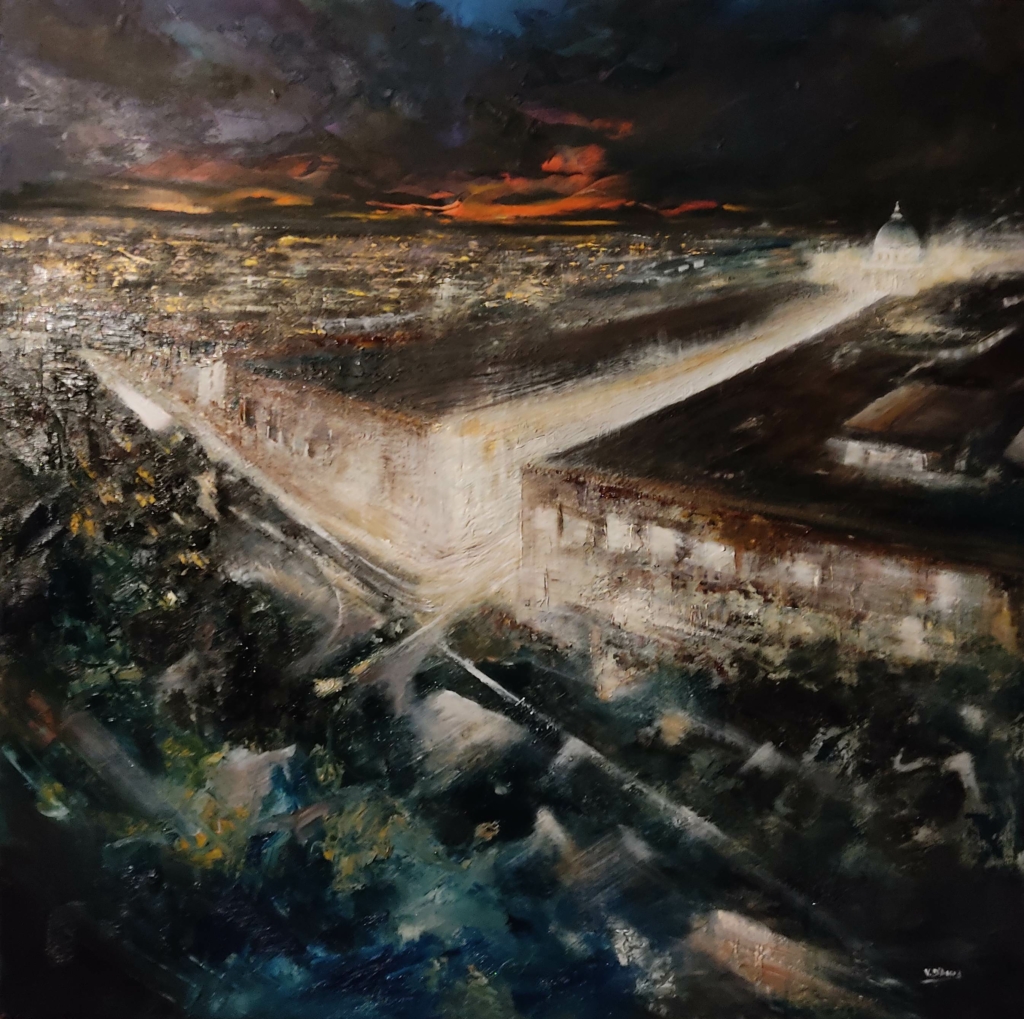
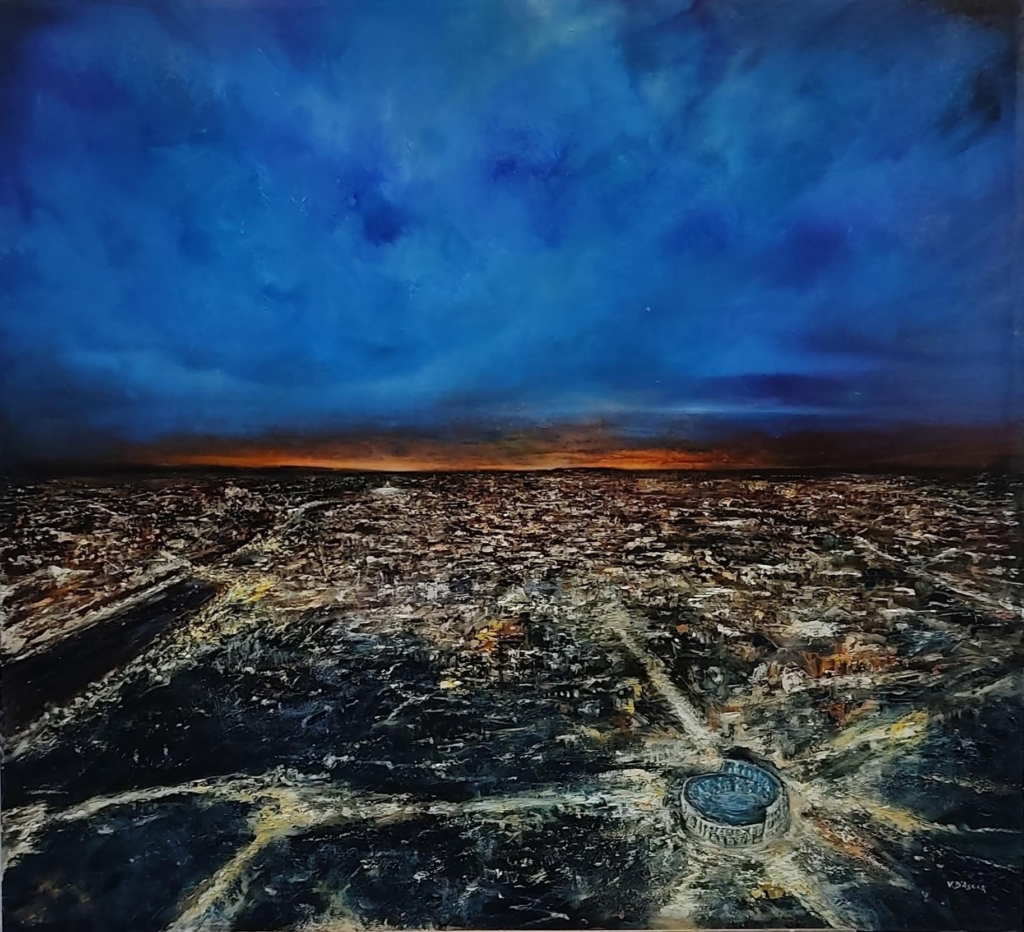
Marta Lock’s interviews:
Vittorio D’Ascia, the explosion of life’s colours on canvas
A true Neapolitan, and therefore smiling, sunny, open and strongly oriented towards expressing his feelings, Vittorio D’Ascia chooses Abstract Expressionism as his expressive language because it is more akin to his feeling, to his absorbing the kaleidoscope of emotions that characterise existence, in all its nuances. In spite of his strong aptitude for creativity, he decided to reserve the space of his free time for the creative side as life in which contingency forced him to follow a completely different professional path; thus art became the revelation of his true essence, that which he could not reveal in his job, and became a therapy to cultivate an interiority that could not help but come out with all the impulsiveness, spontaneity and naturalness with which he fills his canvases. Very often artists induce the public to enter a world different from their own, to meditate on themselves by virtue of the ability of the artist to adopt an expressive language that is simple yet intense, profound yet direct, apparently confused for the mind but immediately clear for the emotions; in this case, D’Ascia succeeds in using a combination of colours to express his feelings almost as if he were looking at a figurative canvas, because what makes the artist’s inner chords vibrate is his own feelings, that connection between experience and perception processed through introspection after which the message is crystal clear. The chromatic combination is also enriched by experimentation because colour alone seems to be limiting in giving life and substance to that prism of experiences, impressions, unrepeatable moments which follow one another day after day and which are captured by the artist’s sensitive eye, so sandy mortar, bitumen, ink and gold leaf are mixed with the consistency of the oils and acrylics to underline and give substance to those moments captured around him which are then narrated through his artworks. All of life’s emotions, D’Ascia seems to say, must be faced and experienced regardless of whether they have a positive or a shadier meaning, because it is often from less serene moments that one manages to find that deviation, that opportunity to get back up and start looking towards a new light. The canvas entitled Athena the Goddess encapsulates this concept exactly, since although she is the Greek goddess of war she is also the goddess of wisdom, demonstrating how two opposing forces belong in any case to the two sides of the same coin, as if without struggle, opposition and tension there can be no knowledge and evolution and, consequently, greater wisdom. The tones are earthy, almost as if that dark nucleus were inseparable from the luminosity that will emerge in a few moments, as if thanks to the nebulous contrast of shadows one will have the strength and capacity to seek out and appreciate the light that will come. In the painting Perfect Storm, on the other hand, the force is contrary, it is from the whirlwind that the sunshine, the positivity that distinguishes the entire composition spreads; the storm is once again the inner one, that dance of sensations and emotions within which the individual finds himself on a daily basis despite not being able to manage them, to welcome them, partly because he is frightened by their force, partly because they distract from the logical consequentiality of everyday life; the artist seems to suggest to open up to emotional storms because it is they who make life a wonderful passage. Yellow, the colour of the sun and joy, predominates together with orange to induce the observer to reflect on the importance of letting go, without wings or a net, to everything that existence has to offer. We will now learn more about the artist directly from his voice. Vittorio, you divide your time between your professional life, your family and your art, how do you manage to reconcile all this? What is the moment when you lock yourself in your studio and start painting? I prefer to paint in the evening, where I can concentrate better, having drawn energy and inspiration from what I have been through during my day, punctuated by work and family life. Sometimes silence is not enough, so, through listening to classical music, I enter my own world, estranging myself from everything and everyone. You have chosen a pictorial language, Abstract Expressionism, which could be considered hermetic and yet your works are highly appreciated by both the public and collectors. What do you think is the key through which you manage to strike a chord with experts and less experienced people? In my artworks, the principle is to capture the viewer’s attention through the explosion of colours and the distortion of details, which emphasise what one is not usually willing to look at. In this way, I slow down and dilate the time of the person looking at the artwork and this favours contact with my emotions and my state of mind. The shapes, the undefined colours have the task and the objective of returning to live with time, not for time. In some paintings, especially the latest ones, is possible to see a return to figuration, is your style changing or is it just a parenthesis closely linked to those specific artworks? How important is the evolutionary drive of an artist? I accept and abandon figurative art depending on the period and the mood. My wife and daughters come to life through the figures, so in that case it is influenced by their moods. You are a member of several artistic and cultural associations, including the historic Cento Pittori di via Margutta; is it important to network in the contemporary art world? Do you think that interaction with other artists is essential in an age where individualism seems to prevail? In art, as in life, confrontation is very important, because through it one grows as a person and as an artist. Creating a network in the art world, involving even the most sceptical artists in expressing their vision of the world by putting it into a circle, is one of the goals I have set myself. I am convinced that everyone is an artist and that only some have the courage to express it and the tools to do so. A hermeneutic circle could foster, for each of us, the possibility of discovering unimaginable resources, which would push us towards new horizons. What are your next projects? I am in contact with several galleries to share new work projects and I am studying new painting techniques. Artistic research and hard work, getting your hands dirty and putting yourself on the line, are fundamental elements for growing, following the metamorphosis that daily overwhelms us and what surrounds us.